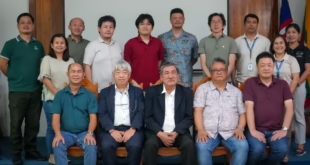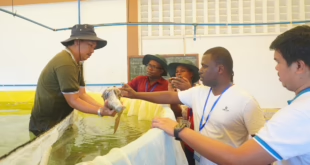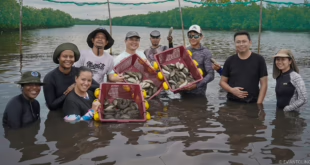
A prized jewel lies hidden beneath the shimmering and pristine waters of Molocaboc Island, a part of the 32-hectare Sagay Marine Reserve in Negros Occidental: the donkey’s-ear abalone (Haliotis asinina), a kind of marine snail known for its unique shell form that resembles the ear of a donkey.
Savoring its delightful taste, one will find a luxurious blend of buttery richness, subtle oceanic sweetness, and umami complexity. Its exquisite flavor, rarity, and labor-intensive harvesting process mean it is highly coveted in the international market, fetching a hefty price tag ranging from US$ 25 to US$ 50 per kilogram.
In Molocaboc, meanwhile, some locals are making a living off the “kapinan” or “sobra-sobra” which are recently being purchased for about US$ 8 per kilogram by buyer-aggregators who then ship the abalone to Cebu where processor-exporters are located.
Years ago, as orders began to pour in from Cebu, as well as hotels and restaurants from major cities, the locals were forced to double or triple their catch from the wild to keep up with the rise in demand. Unfortunately, the pursuit of abundance bore the unwanted consequences – depletion of the abalone population on the Island.
Shifting the tides
The increasing exploitation of the local abalone prompted an international aquaculture research center, the local government of Sagay City, and the local fisherfolks to work together to help the abalone population recover. One of the strategies they adopted is the stock enhancement of the abalone.
Stock enhancement is done by propagating abalone in hatcheries, seeding the young in coralline no-catch zones, and allowing locals to harvest grown individuals outside the protected area.
For years, abalone from Molocaboc were transported to Iloilo to be bred in the hatcheries of the Southeast Asian Fisheries Development Center Aquaculture Department (SEAFDEC/AQD). Beginning sometime in 2011, abalone seeds were brought back from Iloilo and stocked in the reefs of Molocaboc Island after about six-hour trips.
To make the sea ranching more sustainable, SEAFDEC/AQD built a small-scale solar-powered hatchery in Molocaboc in 2018, with support from the Government of Japan Trust Fund. The hatchery, with ten culture tanks of one ton each, made it possible to instead produce the abalone seeds locally.
Dan Baliao, chief of SEAFDEC/AQD, turned over the facilities to the Sagay City local government in 2019 after the research center has “proven that harvesting abalone and sea cucumber can indeed be done sustainably.” He added then that it was time “for the fishers and the LGU to fully own the success and be a model for what other coastal communities can do.”
Recently, the local government of Sagay City sponsored an abalone hatchery operations training for fisherfolks of the island to learn how to breed the abalone themselves. Held from 17 to 28 June 2023 at the Molocaboc hatchery, the training was attended by four members of the Molocaboc Sea Ranchers Association (MOSRA) selected by the local government.
“This is for the participants to have knowledge in running the hatchery, considered to be the first community-managed abalone hatchery in the country so that in the future they will be able to operate it on their own and produce abalone,” said Sagay City Environment and Natural Resources Office head Jose Roberto Togle.
“The end goal of this is livelihood and food security in the community, and the training is beneficial for the abalone and eco-tourism project of the local government,” Togle added.
SEAFDEC/AQD abalone expert Dr. Shelah Mae Buen-Ursua and her team led the training included practical sessions on growing diatom as food for abalone, fabrication of settlement plates, egg collection, identification, selection and stocking of mature broodstock for spawning, stocking of larvae, and preparation of transport materials.
“We are thankful to SEAFDEC/AQD for the help in providing knowledge, especially in abalone production. The training was an eye-opener for us to conserve and practice sustainable farming of the species since it has a high commercial value,” said Princess Sasil, grateful that after the training, she will be employed by the LGU to work on the hatchery.
In a press statement, Mayor Narciso Javelosa Jr. stated that Sagay City is grateful to the research institution for their continued collaboration in providing the necessary training to empower the fisherfolks. /NG Armada and RD Dianala
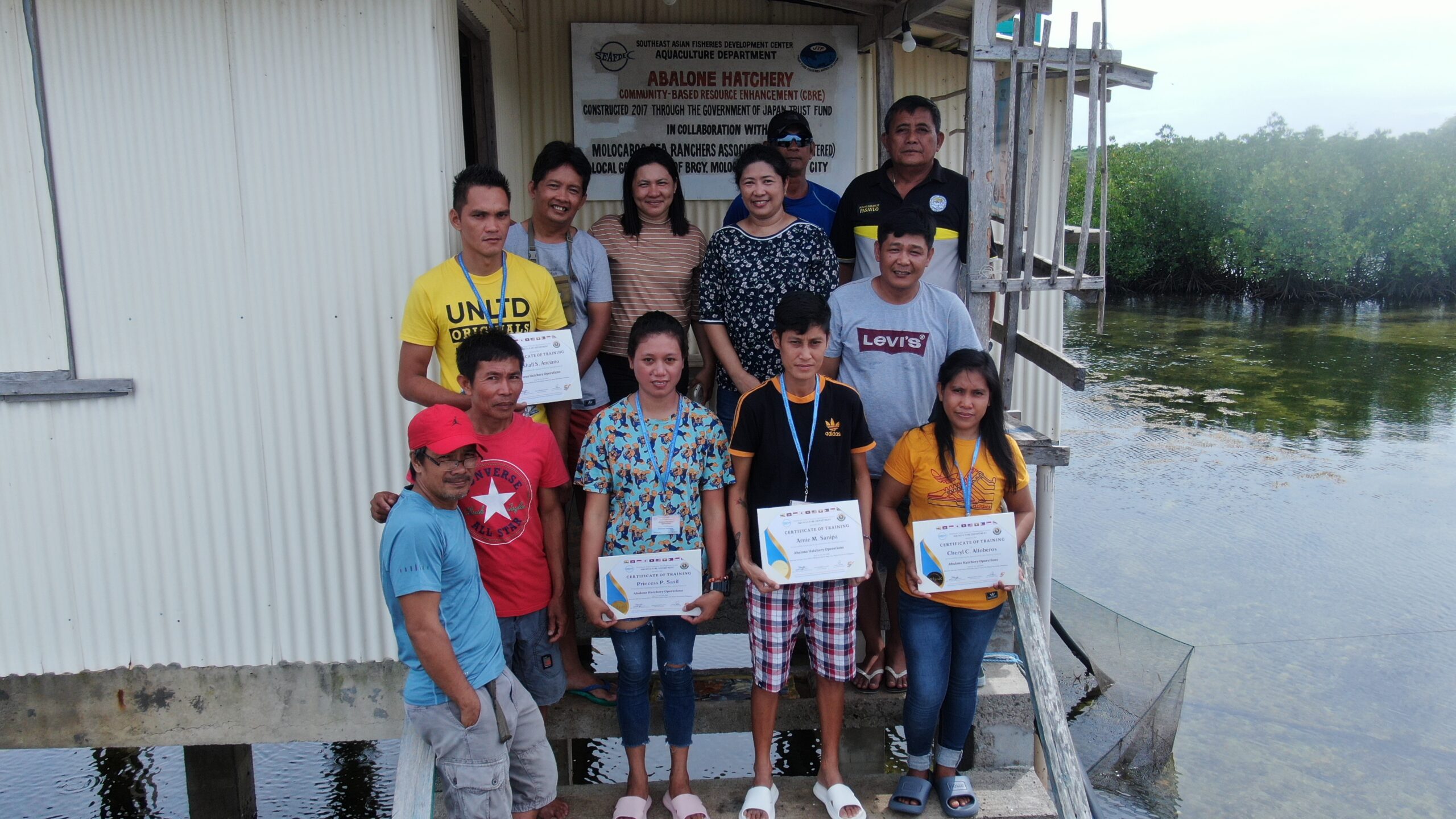
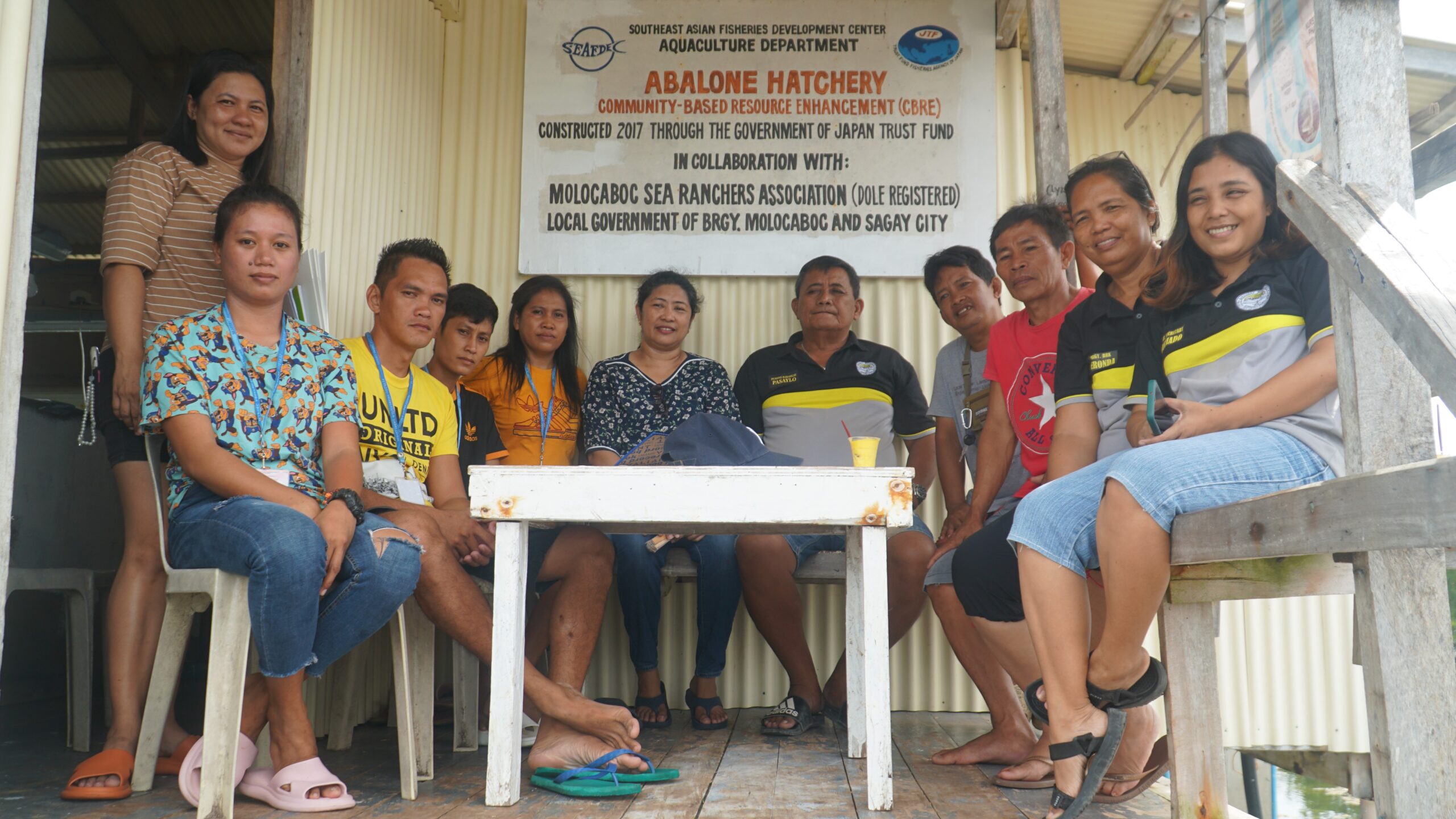
 SEAFDEC/AQD Southeast Asian Fisheries Development Center | Aquaculture Department
SEAFDEC/AQD Southeast Asian Fisheries Development Center | Aquaculture Department
